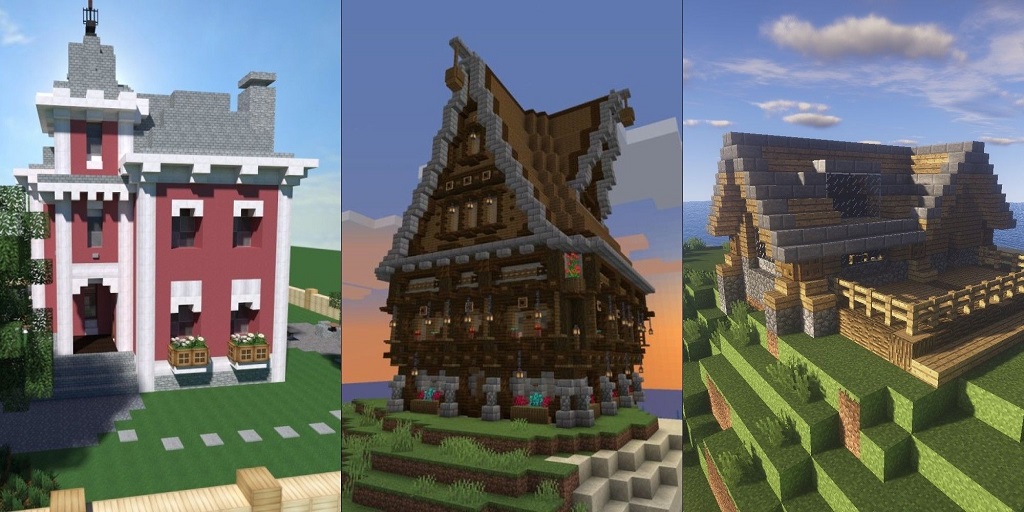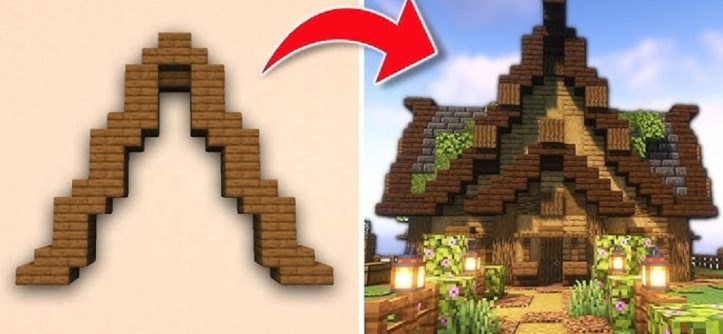Building impressive structures in build a roof in Minecraft requires attention to detail, and the roof often makes or breaks your architectural masterpiece. Whether you’re constructing a cozy cottage or a grand castle, mastering roof design will elevate your builds from basic to breathtaking. The experts at House Needy understand that good design principles apply both in real life and virtual worlds, making roof construction a fundamental skill every Minecraft builder should master.
Creating the perfect roof involves more than simply placing blocks overhead. Additionally, understanding different roof styles, materials, and construction techniques will transform your buildings into stunning works of art. Therefore, learning how to build a roof in minecraft becomes essential for any serious builder looking to improve their construction skills.
Furthermore, roofs serve both practical and aesthetic purposes in Minecraft. They protect your interior spaces from rain and hostile mobs while adding visual interest to your structures. However, many players struggle with creating roofs that look proportional and professionally designed.
Understanding Roof Basics
Before diving into complex designs, you need to grasp the fundamental principles of roof construction. The most important aspect is establishing proper proportions between your walls and roof height. Generally, your roof should be between one-third and one-half the height of your walls for optimal visual balance.
Additionally, consider the building’s purpose when selecting your roof style. A simple house might work well with a basic gable roof, while a cathedral or palace demands more elaborate designs. Moreover, the surrounding landscape should influence your choices, as different biomes call for different architectural approaches.
The slope of your roof also plays a crucial role in the overall appearance. Steep slopes create dramatic, imposing structures, while gentle slopes offer a more relaxed, cottage-like feel. Therefore, experimenting with different angles will help you find the perfect style for each project.

Essential Materials for Roof Construction
Choosing the right materials significantly impacts both the appearance and authenticity of your roof. Wood planks remain the most versatile option, offering various colors and textures to match different architectural styles. Oak, birch, spruce, dark oak, acacia, and jungle wood each provide unique aesthetic qualities.
However, don’t limit yourself to wood alone. Stone materials like cobblestone, stone bricks, and various colored terracotta create excellent roofing options for more substantial buildings. Additionally, newer materials like copper blocks offer unique weathering effects that add character over time.
Stairs and slabs prove invaluable for creating smooth, angled surfaces that give roofs their distinctive shapes. Furthermore, combining different materials within the same roof can create interesting patterns and textures that make your builds stand out from typical constructions.
Popular Roof Styles and Techniques
The gable roof represents the most common and beginner-friendly design. This triangular style works well for houses, barns, and simple structures. Start by placing blocks in a triangular pattern, then add stairs along the edges to create smooth angles.
Hip roofs offer more visual complexity by sloping on all four sides. These roofs work particularly well for larger buildings and provide a more sophisticated appearance. Additionally, gambrel roofs, similar to barn roofs, feature two slopes on each side and create unique architectural interest.
Moreover, flat roofs suit modern builds and desert structures perfectly. While simpler to construct, they require careful attention to detail around the edges to avoid looking unfinished. Therefore, adding small barriers or decorative elements helps complete the look.
Advanced Design Techniques
Once you master basic roof construction, advanced techniques will set your builds apart. Dormers, small windowed sections protruding from sloped roofs, add both functionality and visual appeal to your structures. Additionally, chimneys provide realistic details while serving as focal points for your designs.
Overhangs create depth and shadow, making buildings appear more three-dimensional. Furthermore, varying the roofline with different heights and angles prevents monotonous, flat appearances that characterize amateur builds.
Texture variation within the same material family also enhances visual interest. For example, mixing different wood types or stone variants creates subtle patterns that catch the eye without overwhelming the overall design. However, moderation remains key to maintaining cohesive aesthetics.
Color Theory and Material Selection
Understanding color relationships helps create harmonious roof designs that complement your building’s walls and surroundings. Complementary colors create striking contrasts, while analogous colors provide subtle, pleasing transitions between different building elements.
According to architectural studies from Harvard’s Graduate School of Design, color choices significantly impact how structures are perceived and appreciated. This principle applies equally to Minecraft construction, where thoughtful color selection elevates builds from amateur to professional quality.
Additionally, consider the biome’s natural palette when selecting materials. Desert builds benefit from warm tones like sandstone and terracotta, while forest structures work well with natural wood tones and green accents. Therefore, harmonizing with the environment creates more believable and immersive builds.
Common Mistakes to Avoid
Many builders create roofs that appear too small or disproportionate to their structures. This typically happens when the roof height doesn’t match the building’s scale. Additionally, using only full blocks without incorporating stairs or slabs results in blocky, unrealistic appearances.
Furthermore, neglecting to add supporting elements like beams or pillars can make large roofs appear to float unnaturally. Real-world architecture principles suggest that visible support structures enhance believability, according to research from Architectural Digest.
Moreover, rushing through the construction process often leads to asymmetrical or poorly aligned roofs. Taking time to plan and measure ensures professional-looking results that you’ll be proud to showcase.
Lighting and Interior Considerations
Effective roof design extends beyond exterior appearance to include interior functionality. Proper lighting prevents mob spawning while creating comfortable living spaces. Additionally, strategic window placement in roofs provides natural lighting while maintaining structural integrity.
Skylights offer an excellent way to brighten interior spaces without compromising roof design. However, waterproofing becomes crucial in survival mode, as rain can create unwanted interior water sources. Therefore, planning for both aesthetics and functionality ensures successful builds.
Furthermore, consider headroom and ceiling height when designing steep roofs. While dramatic exteriors look impressive, impractical interiors diminish the building’s overall utility and enjoyment.
Maintenance and Weatherproofing
In survival mode, protecting your roof from damage becomes essential for long-term enjoyment of your builds. Creeper explosions, lightning strikes, and fire can quickly destroy hours of careful construction work. Additionally, planning for easy repairs helps maintain your structures over time.
Using fire-resistant materials in areas prone to lightning strikes prevents catastrophic damage. Moreover, incorporating blast-resistant blocks in strategic locations helps protect against explosive damage without compromising aesthetic appeal.
Therefore, balancing visual appeal with practical durability ensures your roofing projects remain beautiful and functional throughout your Minecraft adventures.
Read More Also: The City of Birmingham Will Leave You Amazed
Conclusion
Mastering roof construction in Minecraft requires patience, practice, and attention to detail. By understanding fundamental principles like proportion, material selection, and architectural styles, you can create impressive roofs that enhance any building project. Additionally, avoiding common mistakes while incorporating advanced techniques will elevate your constructions from amateur to professional quality.
Remember that great roof design combines aesthetic appeal with practical functionality. Whether you’re building a simple house or an elaborate castle, the principles outlined in this guide will help you create stunning roofs that become the crowning achievement of your Minecraft builds.
Read More Also: Ice Dam Prevention for Cold Climates
Frequently Asked Questions
What materials work best for beginner roof builders?
Wood planks and stairs are ideal for beginners because they’re easily obtainable and forgiving to work with. Oak and spruce wood provide excellent starting points for learning basic roof construction techniques.
How do I determine the right roof size for my building?
A good rule of thumb is making your roof height between one-third and one-half of your wall height. This proportion creates visually balanced structures that look professionally designed.
Can I mix different materials in the same roof?
Yes, combining materials adds visual interest and texture to your roofs. However, stick to materials that complement each other in color and style to maintain cohesive designs.
How do I prevent my roof from looking too blocky?
Use stairs and slabs extensively to create smooth angles and transitions. Additionally, varying the roofline with different heights and incorporating overhangs adds depth and reduces the blocky appearance.
What’s the easiest roof style for beginners to learn?
The simple gable roof is perfect for beginners. Its triangular shape is straightforward to construct while providing a solid foundation for learning more advanced roofing techniques.




